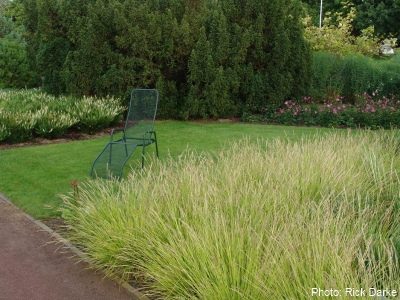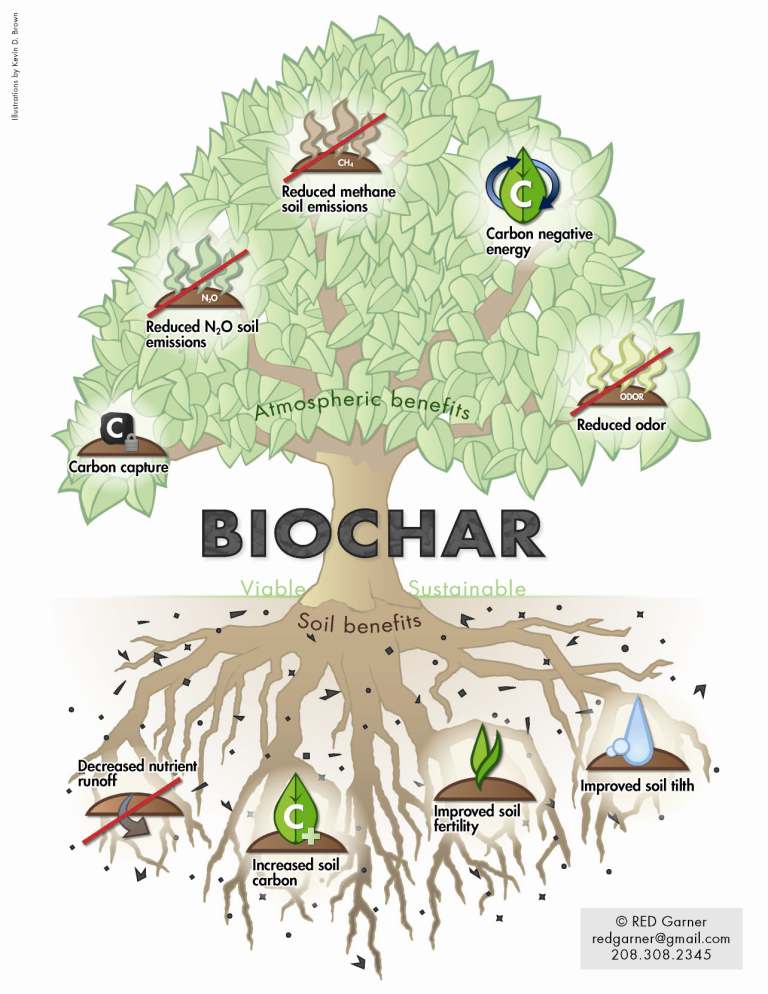“The world’s cultivated soils have lost 50 to 70 percent of their original carbon stock.Absent carbon and critical microbes, soil becomes mere dirt, a process of deterioration that’s been rampant around the globe. Many scientists say that regenerative agricultural practices can turn back the carbon clock, reducing atmospheric CO2 while also boosting soil productivity and increasing resilience to floods and drought. And “Scientists say that more carbon resides in soil than in the atmosphere and all plant life combined; there are 2,500 billion tons of carbon in soil, compared with 800 billion tons in the atmosphere and 560 billion tons in plant and animal life. And compared to many proposed geoengineering fixes, storing carbon in soil is simple: It’s a matter of returning carbon where it belongs. ” https://bit.ly/ML05ov
While more attention has been paid to farming practices, Landscaping can also have the same impact. Landscaping can not only help control storm water runoff and help reduce the cooling loads of a building but actually sequester or remove carbon from the atmosphere and store it in the soil. These principals can apply to landscaping from the home lot size to city parks. ”There are a range of landscape architecture-based mitigation strategies that, if employed at mass scale, can help reduce GHG emissions by 50-85 percent by 2050.”https://bit.ly/1Lq57z1

There can be a large difference in the carbon absorption and emissions between landscapes in residential settings. A lot of factors come into play from the maintenance methods to the types of plants used. Native plants tend to do best and need the least water while turf grass tends to store less carbon in the soil and usually is mowed with fossil fueled machinery which negates its carbon advantage. Using prairie grasses (whose roots can go down 15 feet or more), woody plants and shrubs in a diverse mix is best to absorb carbon dioxide from the air through photosynthesis and store it as a stable plant material in the soil.
In the case of new construction, where the site is disturbed, saving the topsoil and planting cover crops as soon as possible and mulching any exposed areas can help initially. Then adding compost and mulch around new plants can improve the soils structure and microbial life. Avoid chemical fertilizers or pesticides that damage the microbes that store carbon.
There is also biochar. “With Biomass Pyrolysis, up to 50% of the carbon that has been captured from plants and crops can now be put back into the earth in the form of biochar (biomass charcoal). Because this carbon is so stable (a half life of up to 1000 years), we now have a pathway for a more permanent carbon storage.” https://www.carbonchar.com/ This is available in local garden supply stores under the name of CharGrow which is produced by a local company. It is also easy to make your own biochar by burning scrap wood and then eliminating the air (oxygen) to the fire and let it smolder for a day or so. There is a lot of information out there for making biochar in pits, in kilns, in cookers, etc. If you plan to use biochar in your garden make sure you charge or activate it with compost or it or another source of nutrients like fish emulsion. Here is a good site on making your own. https://bit.ly/1QiRfhx

Soil is a fertile ground for carbon capture and can be utilized in landscapes as well as farms to help combat climate change.
https://www.stroudcenter.org/livablelandscape/action.shtm
boone guyton

